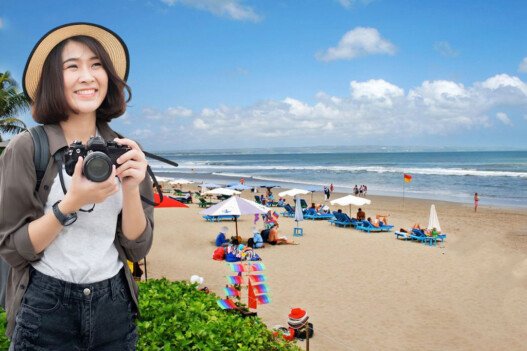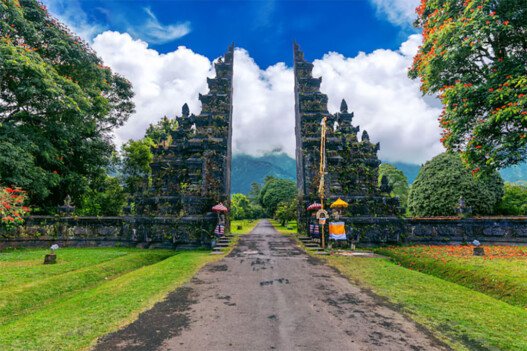Bali, the Island of the Gods, is renowned for its stunning beaches, lush rice terraces, vibrant culture, and warm hospitality. However, there’s one aspect that can test even the most seasoned travelers: the traffic. Whether you’re a first-time visitor or a returning traveler, navigating Bali’s roads can be a daunting experience. But fear not! With the right knowledge and preparation, you can traverse the island’s bustling streets with ease and enjoy all that Bali has to offer.
🛵 Understanding Bali’s Traffic Landscape
Bali’s traffic is a unique blend of traditional and modern. You’ll encounter everything from scooters overloaded with goods and passengers to luxury cars navigating narrow, winding roads. The island’s infrastructure, while improving, still struggles to keep up with the rapid influx of tourists and locals alike.
🚦 Key Traffic Challenges
- High Scooter Usage: Scooters are the primary mode of transportation for both locals and tourists. They offer flexibility but can be hazardous in heavy traffic.
- Narrow Roads: Many of Bali’s roads were not designed for the volume of vehicles they now carry, leading to congestion and bottlenecks.
- Lack of Traffic Signals: In some areas, traffic lights are scarce, and intersections can be chaotic.
- Pedestrian Obstacles: Sidewalks are often used for parking, forcing pedestrians to walk on the road.
🧭 Essential Tips for Navigating Bali’s Roads
1. Rent a Scooter Wisely
While renting a scooter is a popular choice, it’s essential to do so responsibly. Ensure the rental company provides a helmet and that the scooter is in good condition. Always wear protective gear, including closed-toe shoes and long sleeves, to safeguard against road debris and the sun.
2. Use Ride-Hailing Apps
Apps like Grab and Gojek are widely used in Bali and offer a convenient way to get around. They provide transparent pricing and can help you avoid the hassle of negotiating fares. Plus, they often have drivers who are familiar with the best routes to avoid traffic jams.
3. Plan Your Travel Times
Traffic congestion is most severe during rush hours: 7–9 AM and 5–7 PM. To minimize delays, plan your outings during off-peak hours, such as early mornings or late evenings. Additionally, avoid traveling during religious ceremonies, as roads may be closed or congested.
4. Stay Calm and Patient
Bali’s traffic can be unpredictable. It’s common to encounter sudden stops, unexpected turns, and pedestrians crossing without warning. Maintaining a calm demeanor and staying alert will help you navigate these challenges safely.
5. Know the Local Road Etiquette
Understanding local driving customs can enhance your experience. For instance, it’s customary to use hand signals to indicate turns or lane changes. Being aware of these practices can help you communicate effectively with other drivers.
🚌 Exploring Alternative Transportation Options
🚐 Public Buses (Bemos)
Bemos are minivans that operate on fixed routes and are a budget-friendly option for getting around. However, they may not adhere strictly to schedules and can be crowded during peak times.
🚖 Taxis
Taxis are readily available in tourist areas. Opt for the Blue Bird Group taxis, known for their reliability and use of meters. Always confirm the fare before starting your journey to avoid misunderstandings.
🚍 Tourist Shuttle Services
Services like Kura-Kura Bus offer scheduled routes connecting major tourist destinations. They provide a comfortable and cost-effective way to explore the island without the stress of driving.
🧳 Packing Essentials for a Smooth Journey
- International Driving Permit: Required for renting a scooter or car.
- Travel Insurance: Ensure it covers scooter accidents and medical emergencies.
- Navigation Tools: Download offline maps or GPS apps to help you find your way.
- Reusable Water Bottle: Stay hydrated, especially during long drives.
- Light Jacket or Scarf: Protect yourself from dust and sun exposure.
🌟 Embracing the Bali Spirit
While Bali’s traffic can be challenging, it’s also part of the island’s charm. The vibrant streets, the hustle and bustle, and the ever-present smiles of the locals all contribute to the unique experience. By staying informed, planning ahead, and maintaining a positive attitude, you can navigate Bali’s roads with confidence and enjoy all the beauty the island has to offer.









